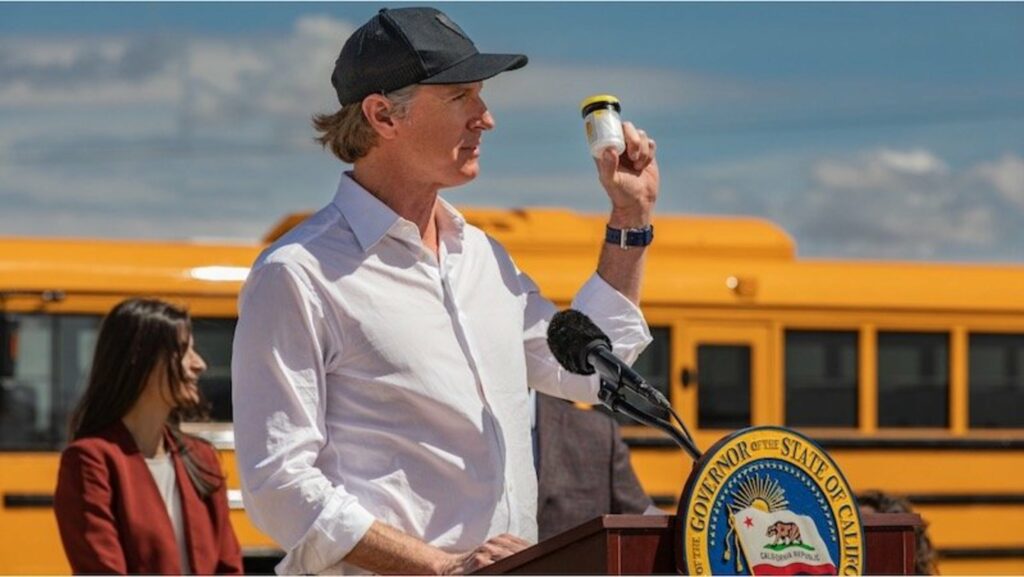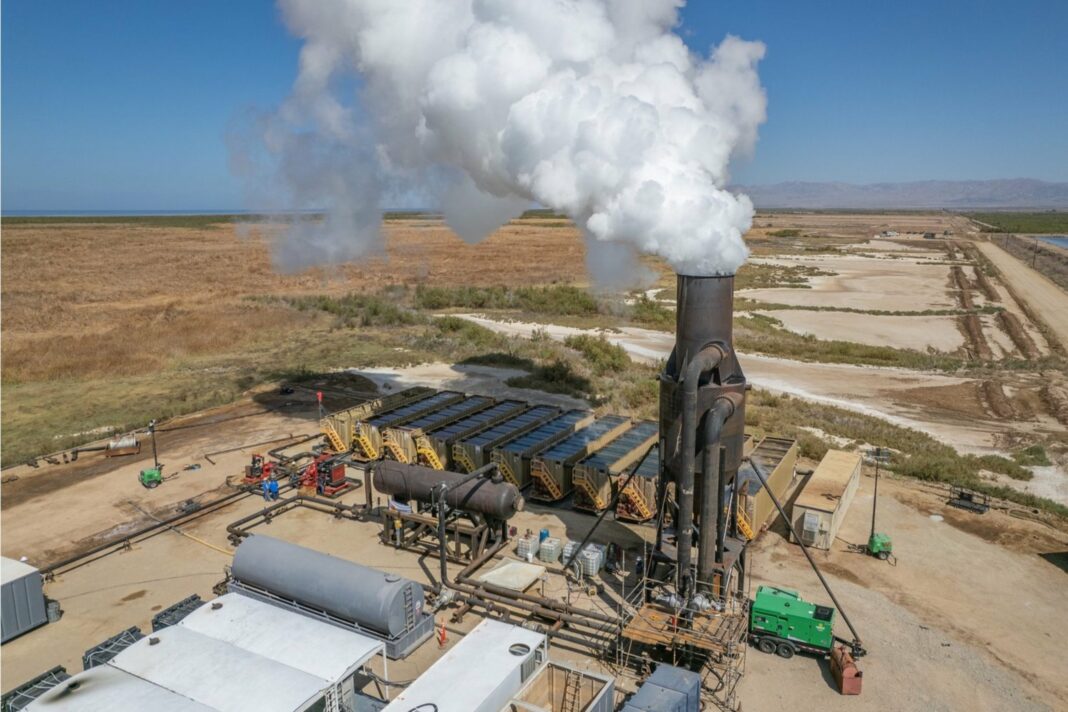Could the Salton Sea become the “Saudi Arabia of Lithium”?
The sprint toward electrifying our economy to curb climate change sometimes has some nasty side effects. One is that the batteries we need to store all that juice require minerals like lithium that have to be mined. At the Salton Sea, money is beginning to flow to fund cleaner production of lithium, the “white gold” used in everything from cell phones to EVs.
Boom and Bust in the Desert
About 100 miles east of San Diego lies the Salton Sea. Unless you’re a brine shrimp or migratory bird, the story of the Salton Sea is either a tragedy or a farce. Even its creation was an accident: In 1905, water burst from a Colorado River irrigation canal that fed Imperial Valley farmers, and it was two years before the flow was stopped. In those two years, the water filled the desert Salton Basin, a dry lake bed, and created a briny, 400-square mile inland sea 200 feet below sea level. The town of Salton and half the Torres Martinez Desert Cahuilla Indian Reservation were submerged.
Through the early part of the 20th century, the Sea was sustained by agricultural runoff from wasteful irrigation practices, which also filled the lake with all sorts of nasty fertilizers and minerals. For a while, fish and other wildlife prospered and the area was briefly a popular resort destination in the 1950s and ’60s. But in the 1970s, the lake was battered by increasing pollution levels, rising salinity killing off fish and birds (it is significantly saltier than the ocean), and even catastrophic storms.
By the 1990s, the lake was a disaster, featuring massive fish and bird die-offs, ghastly algal blooms, and dramatically reduced water levels as local farmers improved irrigation efficiency. Repeated federal and state “restoration” plans have come to naught, as lake levels continue to fall and wind whips toxic dust from the drying lake bed into the air to be breathed in by residents, 85% of which are LatinX. Today, minor wetland restoration and dust control efforts continue, but the massive funds needed for a comprehensive plan remain elusive. Even birds are starting to avoid the lake, much to the pleasure of the thriving mosquito population.
A New Lithium Boom?
But there’s a twinkle of hope in this hard-luck landscape in the form of demand for electric vehicles and other devices that need batteries, and specifically the lithium that goes into the best battery tech.
The Salton Basin features about a dozen geothermal power facilities, mostly built between the 1980s and 2000. These clean power plants take super-hot brine from deep underground and use it to drive turbines that create about 400 megawatts of electricity total, enough to power roughly 250,000 homes. But geothermal plants are expensive to build, and new ones often don’t pencil out as solar, wind, and other energy sources become cheaper.
A U.S. Department of Energy report released in 2023 estimated that the Salton Sea area could produce enough lithium over the next 30 years to build 375 million EVs.
But that hot brine also contains valuable minerals, including lithium. That magical combination of abundant green power and available lithium has resulted in a potentially major boom in lithium extraction. Controlled Thermal Resources Holdings Inc., an Australia-based company, broke ground in January 2024 on a $1.85 billion integrated lithium and renewable power production facility on the shore of the Salton Sea. BHE Renewables, which owns most of the existing geothermal plants, is also investigating plans to extract lithium here. And San Diego–based EnergySource, which has operated a geothermal plant in the area for years, is planning a $1-billion expansion to take advantage of the “white gold.”
“We started out looking at manganese, zinc, and lithium,” Eric Spomer, the CEO of EnergySource Minerals told KPBS in October 2022. “But it became clear pretty quickly that all anybody wanted to talk about was lithium.”
Traditionally, lithium is mined in hard-rock mines in Australia and China, with the associated environmental costs like habitat destruction, and water and energy use. It is also extracted from briny water in evaporation ponds in South America, which is somewhat cleaner. These geothermal plants by the Salton would use “direct extraction,” which essentially filters the lithium from the underground brine already used to produce electricity. This process is substantially cleaner than both older methods, with almost no greenhouse gas emissions or water use.

A U.S. Department of Energy report released in 2023 estimated that the Salton Sea area could produce enough lithium over the next 30 years to build 375 million EVs. This boom would be in an area that has a poverty rate over 21%, much higher than California or the U.S. as a whole (both about 12%). In 2022, Governor Gavin Newsom, who referred to the Imperial Valley as the “Saudi Arabia of lithium,” signed a law that would tax lithium extracted from the area and reinvest that money in both the local economy and the Salton Sea itself. State and federal research grants have flowed into the region as well, intended in part to combat the reliance on China, where much of the world’s lithium is either mined or refined.
So starting soon, clean energy will power cleaner lithium extraction that will fuel more clean energy, a cleaner transportation future for everyone, and economic and environmental revitalization for a region that has seen more hard times than boom times.


